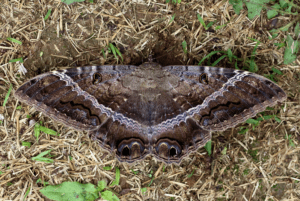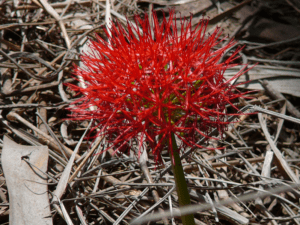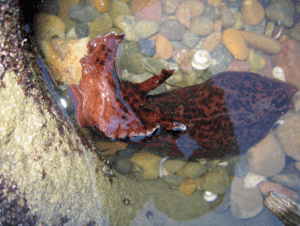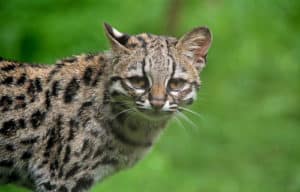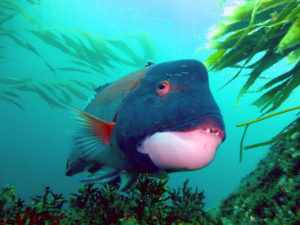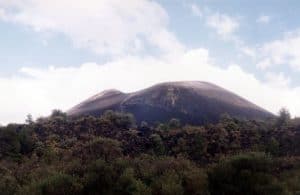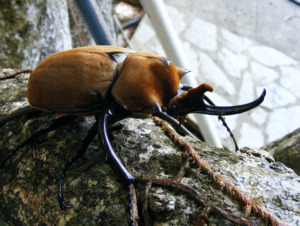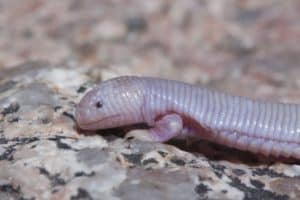Black Witch Moth Facts Related Articles Black Witch Moth Physical Description Most of its relatives seem content to impress based on one trait alone, but not the magnificent Black Witch Moth. That’s because this Lepidoptera merits appreciation due to both its appearance and size. This insect shines in terms of both attributes, in fact. Like many […]
Green Lynx Spider
Green Lynx Spider Facts Related Articles Green Lynx Spider Physical Description The Green Lynx Spider displays a rather moderate degree of sexual dimorphism. That occurs quite commonly among spiders. However, its approach to this also differs from that of most other spiders. The body of the female may be as much as 0.9 in (23 […]
Blood Lily
Blood Lily Facts Related Articles Blood Lily Physical Description The truly stunning Blood Lily merits admiration for more than just its unique appearance. That’s because it evolved a highly fascinating physical characteristic. That occurs due to the fact that the remarkable plant constitutes both a perennial and an evergreen. As a result of this, specimens […]
California Sea Hare
California Sea Hare Facts Related Articles California Sea Hare Physical Description First of all, the amazing California Sea Hare ranks as a moderate-sized type of sea slug. That holds true due to the fact that mature specimens attain an average length of approximately 8 in (20 cm). An average adult weight further equals roughly 2.2 […]
Margay
Margay Facts Related Articles Margay Physical Description Like many of its relatives, the gorgeous Margay generally instantly captivates those individuals fortunate enough to encounter one. That’s especially true if that meeting takes place in the wild. Unlike some of those same kin, however, it rarely grabs one’s attention due to physical dimensions. It’s actually smaller […]
California Sheephead
California Sheephead Facts Related Articles California Sheephead Physical Description Yet another easily noted aspect of the amazing California Sheephead occurs in terms of its sheer physical appearance. That holds true due to the fact that this species displays a marked degree of the trait of sexual dimorphism. Furthermore, in this truly fascinating animal, that trait […]
Paricutin
Source: http://bit.ly/2F5PepJ Photo: Karla Yannín Alcázar Quintero CCL: http://bit.ly/2xQPH8p Paricutin Facts Related Articles Source: http://bit.ly/2GrR5VT Photo: Jorge Figueroa CCL: http://bit.ly/2xQPH8p Paricutin History Firstly, about three weeks prior to the actual eruption, people near Paricutin village heard rumbling noises that resembled thunder. These were actually extremely deep magmatic earthquakes. Secondly, Paricutin also began as a small fissure in a […]
Elephant Beetle
Elephant Beetle Facts Related Articles Elephant Beetle Physical Description Firstly, the truly amazing Elephant Beetle presents a rather significant degree of sexual dimorphism. In this instance, this natural principle displays itself in two ways. One of these happens to be in the variation of physical size between the genders. Secondly, this holds true due to the […]
Mexican Mole Lizard
Source: http://bit.ly/2AZIIwJ Photo: marlin harms CCL: http://bit.ly/2xQPH8p Mexican Mole Lizard Facts Related Articles Mexican Mole Lizard Physical Description First of all, the breathtaking species known as the Mexican Mole Lizard remains a rather diminutive variety of reptile. That’s because individuals attain a maximum known length of roughly 9.5 in (24 cm). In addition, the width […]
Wheel Bug
Wheel Bug Facts Related Articles Wheel Bug Physical Description Without doubt, the sincerely amazing species known as the Wheel Bug possesses a most distinctive physical appearance. This fact alone gives it a certain impressive status. It makes this unique work of Nature stand out from its many related species. However, this remarkable invertebrate also fully […]
